Similar to picking an enduro bike over a downhill rig for a day at the bikepark to make things a little more exciting, the new, 2023 Yeti SB120 can provide that same feeling for local trails. More playful than its longer travel siblings with an efficient geometry, the SB120 is a bike that feels as much at home out on an epic backcountry trip as it would railing a slalom track.
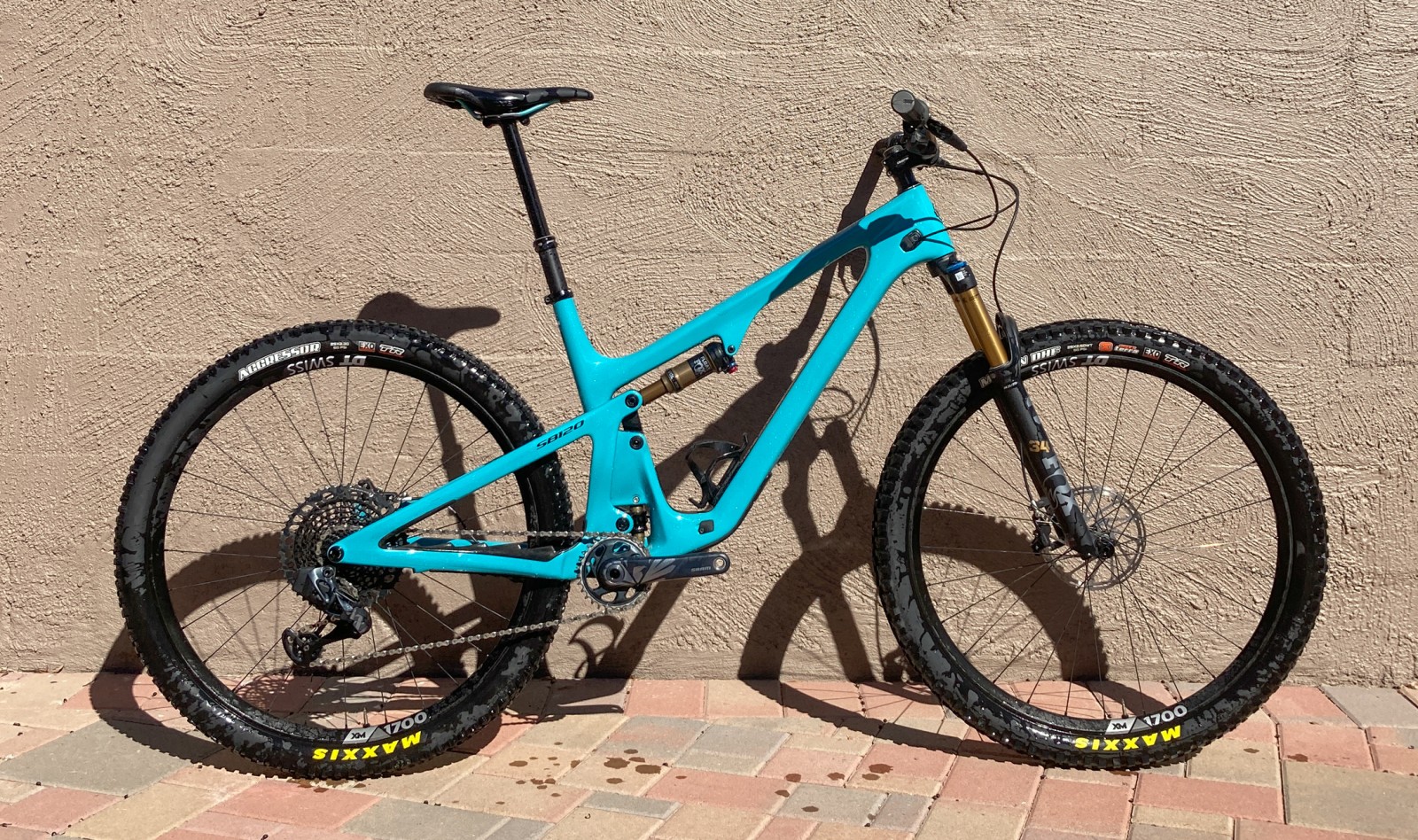
Highlights
- Carbon fiber frame construction - Turq and C model options
- 29-inch wheels
- 120mm (4.7-inches) rear wheel travel // 130mm (5.1-inches) fork travel
- Switch Infinity suspension design
- 66.5-degree head angle
- 76.5-degree effective seat tube angle
- Internally guided cable routing with downtube access
- Boost 148mm rear hub spacing
- One-piece shock clevis not found on other SB models
- UDH compatible
- Sizes: XS-XXL
- Measured weight (size XL, no pedals): 29pounds (13.15kg)
- MSRP: $9,600 USD (Turq 3 model tested)
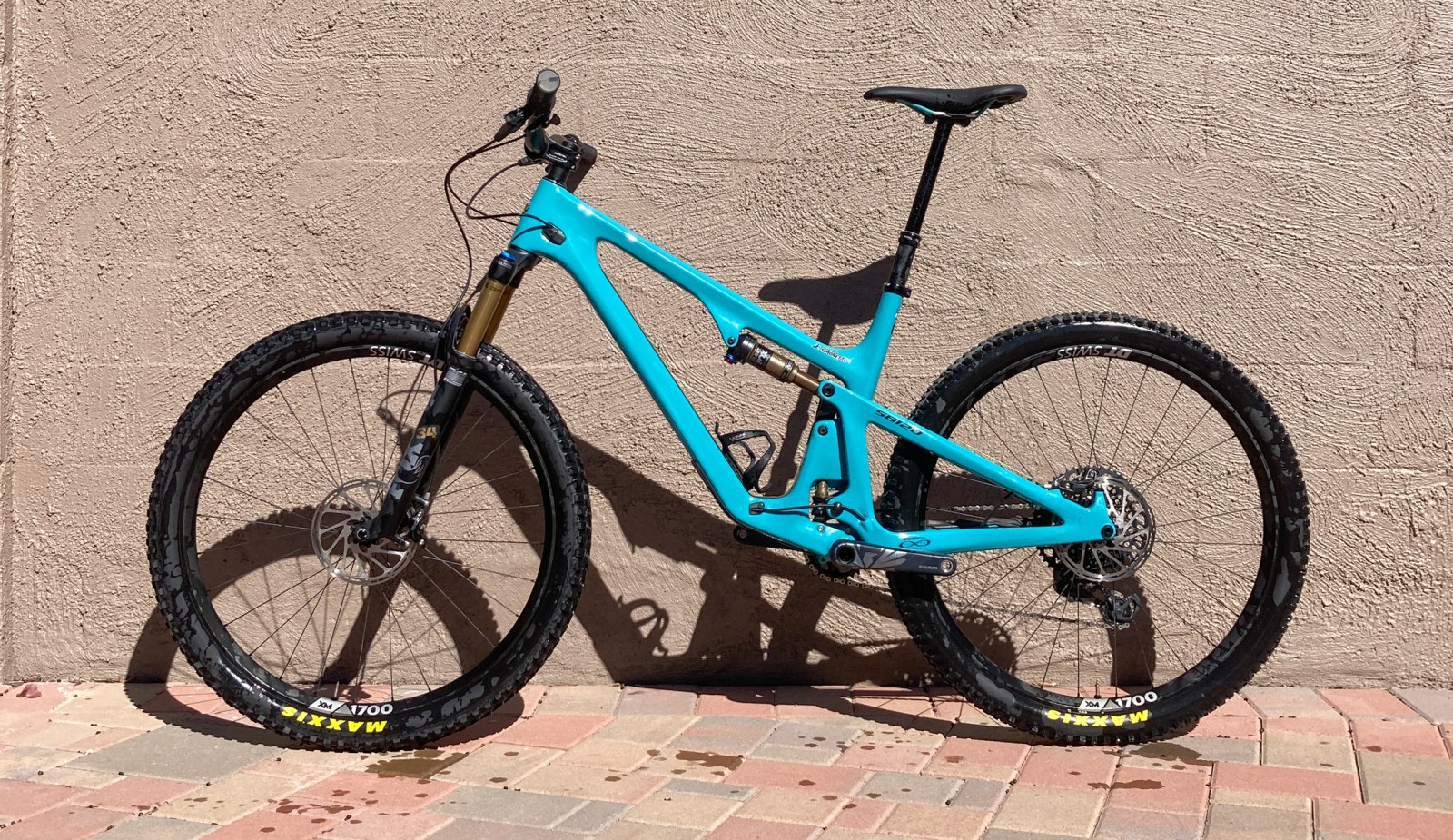
Strengths
|
Weaknesses
|
Overview
Until now the SB115 was Yeti's short-travel trail bike solution for epic rides or fast-paced short track laps. The SB120 arrives as its replacement to further the capabilities of the platform. Using updated Switch Infinity components and geometry to match, the new bike pushes further into the aggressive trail category and draws a more definitive line between cross country and aggressive trail. An extra bit of travel and refined kinematics paired with the longer, lower, slacker treatment diversify the SB120's abilities.
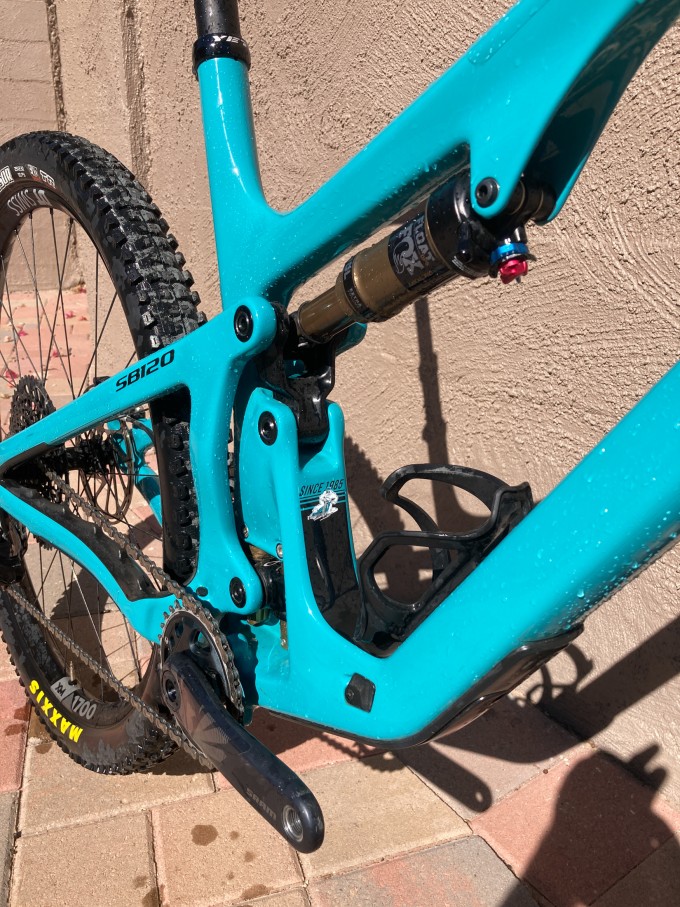
Frame Details
The new frame features Enduro Max sealed bearings which are now pressed into the aluminum links rather than into the carbon frame, ensuring perfect alignment. Cable routing is handled by ports taken from the Yeti 160e, and cables are fully guided with internal tubing. Molded frame protection is also borrowed from the 160e with the addition of a multi-density downtube protector composed of a hard plastic outer shell and pliable rubber inner layer. There are no frame storage or tool mount options anywhere on the SB120, but Yeti offers an Occam frame straps with BOA and Dynaplug kits as an add-on. The SB120 downtube has higher ground clearance than the SB115 and a visual identity more inline with the SB160 that was recently launched.
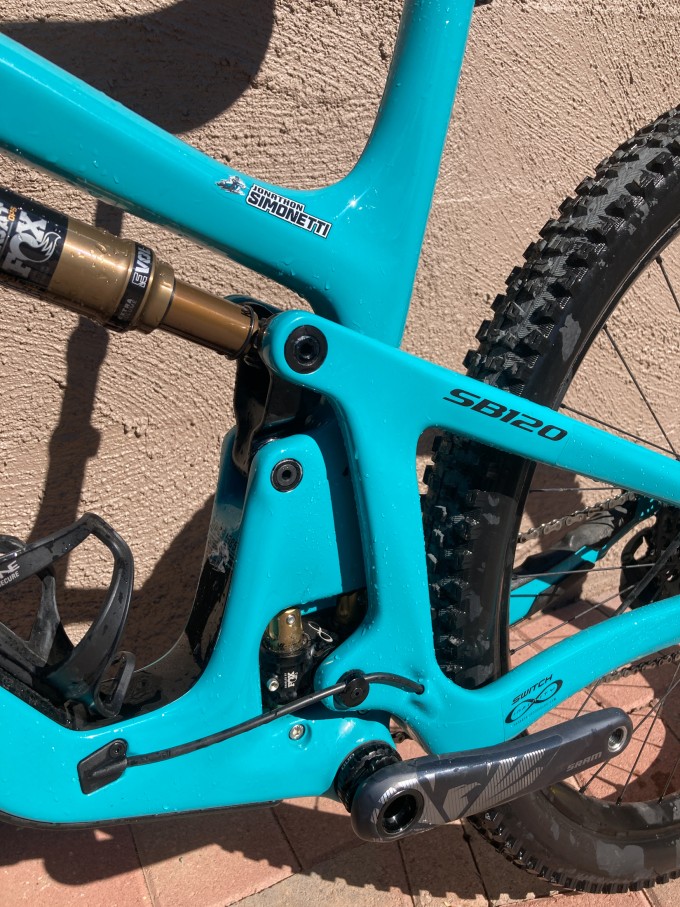
Suspension Design
Yeti’s Switch Infinity link works by changing the direction of the axle path throughout the rear wheel travel. It does so via Kashima-coated sliders built into the frame, which have been optimized for the SB120. Yeti is said to have decreased friction within the Switch Infinity system through use of updated bearings, seals, and hardware. The updated components will be retrofittable to older SB frames. Kinematics remain relatively linear but with a slight bump in progression (11%) towards the end of the stroke to simplify shock tuning and setup.
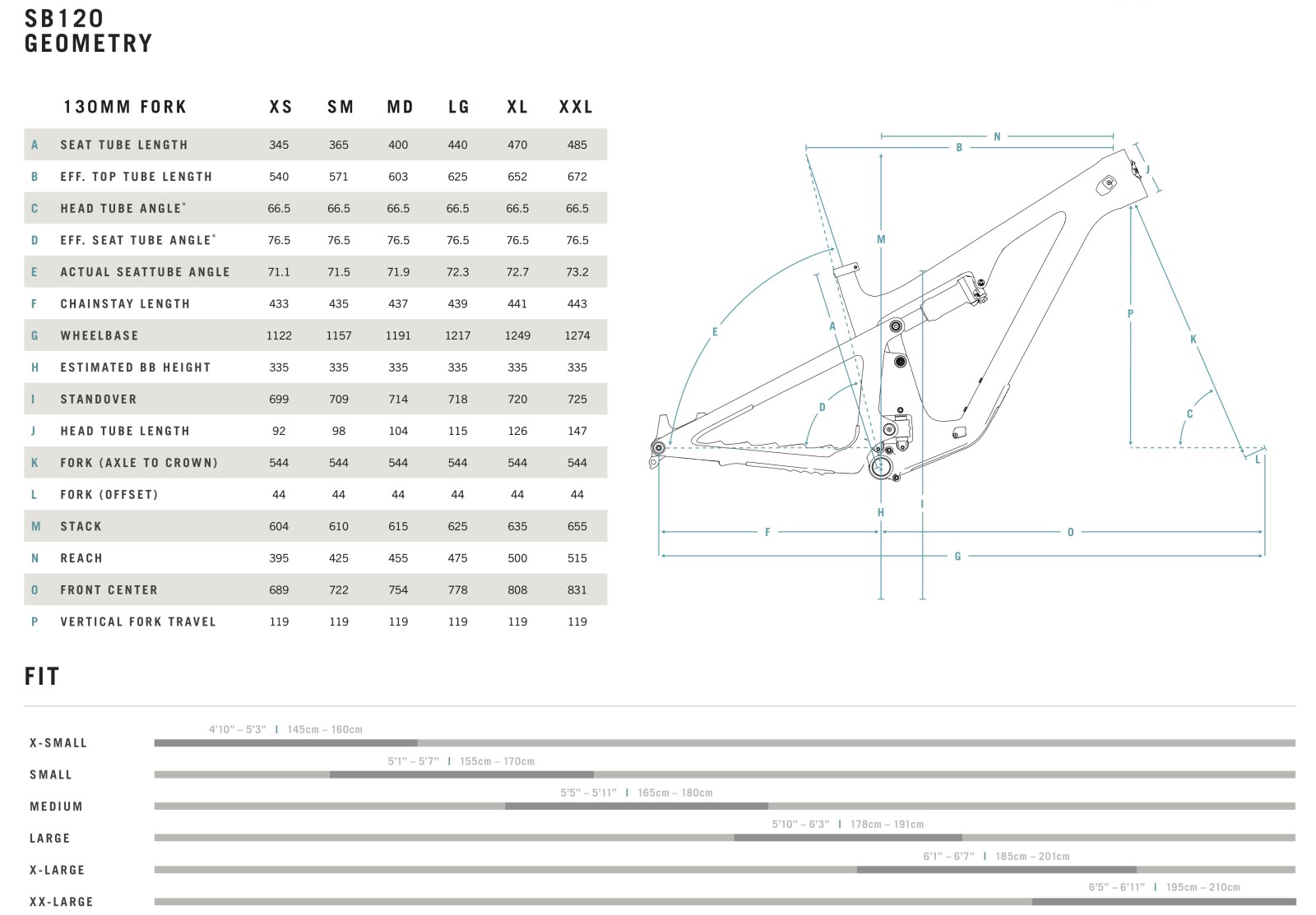
Geometry
Falling in line with current trends, the geometry of the SB120 is the modernized evolution of the SB115 that widens capabilities and maintains efficiency. Effective seat tube angle steepens significantly by 2.5 degrees, head tube angle slackens one degree, BB height is almost 7 degrees lower with a longer reach and wheelbase as expected. Chainstay lengths are size-specific at 441mm on our size XL test bike, only .3mm longer than the SB115, and reach has grown just over 30mm from 469.5mm to 500mm.

Build Kits
No surprise here, but you'll have to break out the big wallet for a Yeti SB120. It comes in 5 different build kits options that start at $6,300 (C1) and top-out at $12,100 (Turq T4). There are upgrade kits that include FOX Factory suspension options for C Series builds, and a DT Swiss EXC1501 upgrade option on T1 and T3 level builds. All SB120s feature a 130mm FOX 34 fork which was a standout component for us and paired nicely with the compliance of the frame.
C Series build kits start at $6,300 for the C1 with a Shimano SLX groupset and $7,000 for the C2 running SRAM GX. Both C Series bikes feature FOX Performance suspension and Crank Brothers Synthesis Enduro wheelsets. Turq kits use the higher end Turq carbon layup and all feature FOX Factory suspension and SRAM G2 RSC brakes. The T1 starts at $9,100 with a mostly SRAM GX groupset. The T3 (tested) at $9,600 is built with a combination of SRAM X01 and XX1 AXS components while the $12,100 Turq T4 sees more drastic changes to component spec. Made for those looking to shave grams, the T4 build kit ditches the trail spec and goes ultra lightweight with a Fit 4 damper in the FOX 34, Fox Transfer SL post, DT Swiss EXC 1501 carbon wheelset standard, Maxxis Rekon Race tires front and rear, as well as SRAM Level Ultimate brakes. The Turq frame alone will set you back a whopping $4,600 with a FOX Factory DPS shock.
On The Trail
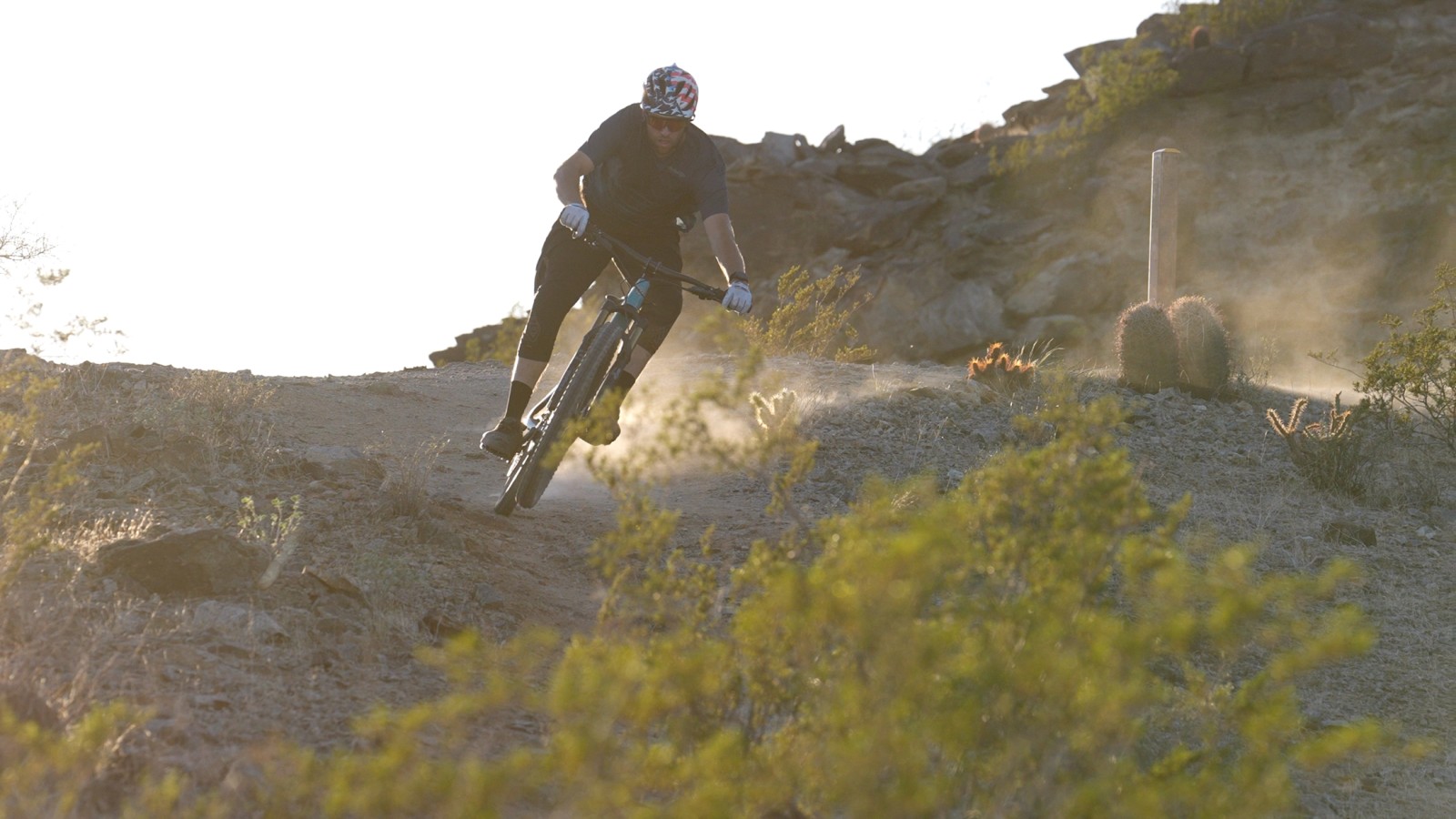
We first laid our eyes on the SB120 in Breckenridge, CO, back in September at the press camp Yeti put together. Our first ride on the bike was just outside of town at the Horseshoe Gulch trailhead with an equal 3,100ft of climbing and descending over 22 miles. The first half of the ride started with a very technical climb up a trail littered with roots and rocks. We descended back down with very broken up momentum which required a lot of steering input and delivery to the pedals. The second half of our ride in Colorado brought us to the top of a much longer descent with a lot more momentum on tap, consisting of high-speed traverses littered with alternate side hits. Some rain moved in as we started our descent and provided an insane level of traction allowing us to blindly swing in and out of turns faster than we maybe should have. This demonstrated the agility of the SB120. The remainder of our test period was spent at South Mountain in Phoenix, AZ, where trails vary in speed but jagged rocks are a constant. Technical climbs come in no shortage and square-edge hits are frequent. We rode a variety of high-speed chopped out descents along with smoother downhills that allow for more sprinting and pumping.
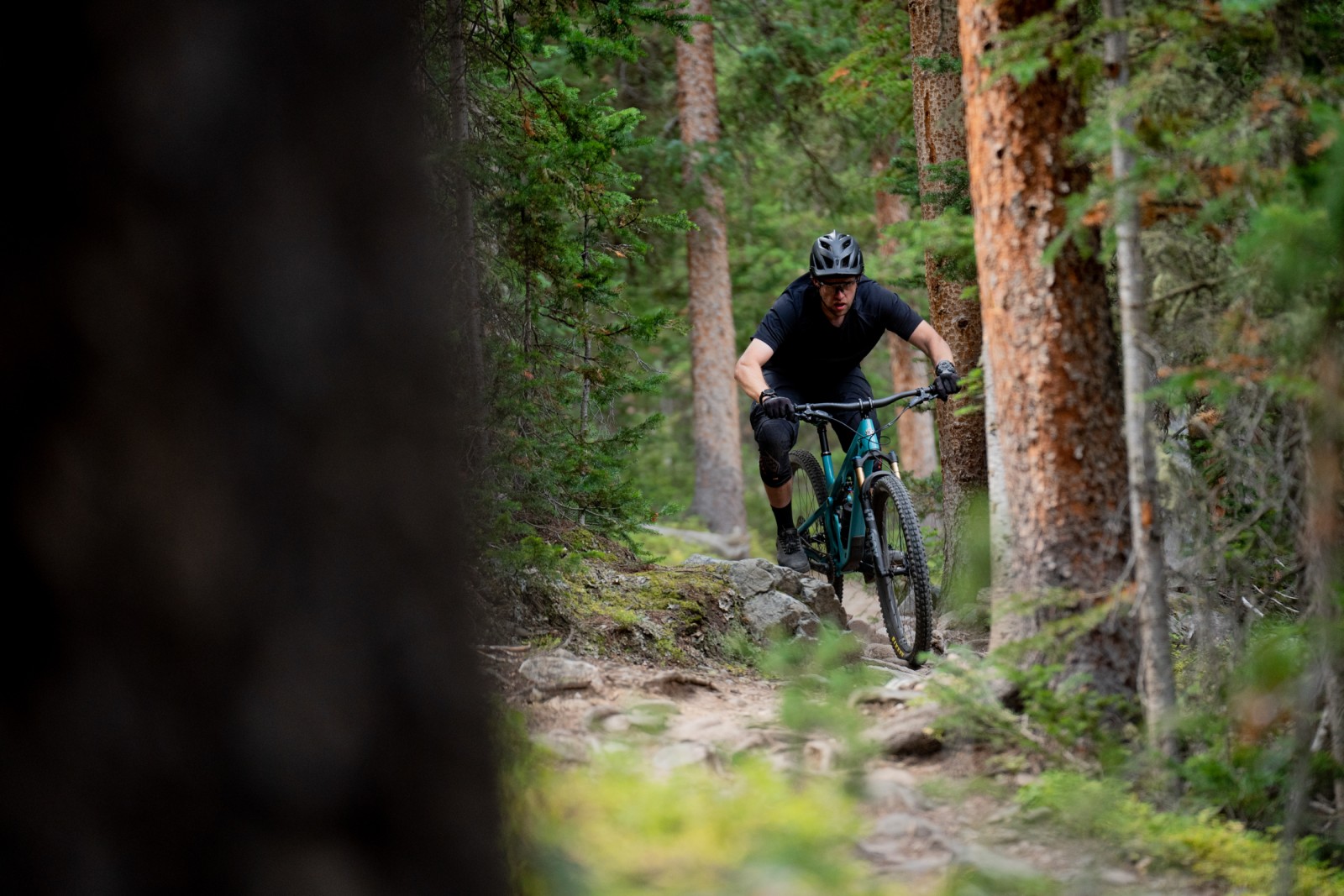
Setup
At the same press camp we attended for the recently launched SB160, we were also presented the SB120. The staff from Yeti set sag for us and we ran their suggested settings for compression on the DPS shock, being in the most open level (1 setting of 3) with rebound set to where we like it. Thanks to the addition of the Grip 2 damper on the revised Fox 34 chassis, setup was a breeze, and we matched our usual settings, only going one click slower on low-speed rebound to account for the higher air pressure of the lower volume air spring. The setup used at the press camp in Colorado proved to work just as well for our home trails in Arizona.
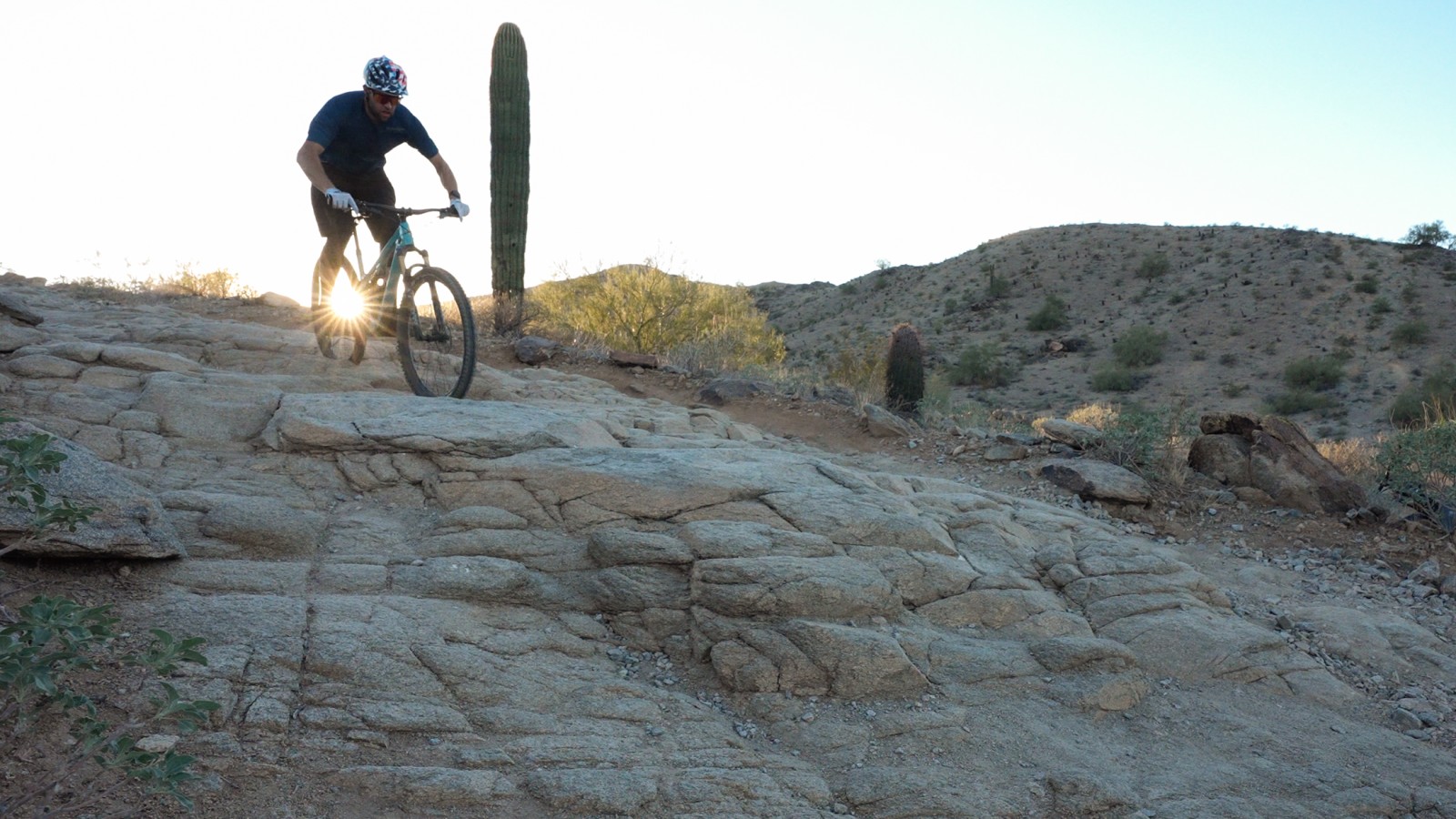
First sitting on the bike after setup, we immediately noticed the pedaling-focused intentions of the bike. The front of the bike felt low, similar to the Yeti SB160. To remedy this feeling for the remainder of the test period, we swapped the stock 20mm rise Yeti carbon handlebar for our own 38mm rise bar with the same bend (9-degree back sweep / 5-degree upsweep) and moved our seat forward a few millimeters, as the seat tube angle is slightly slacker than the enduro bike we’d ridden the day before. We did not feel the need to make any other changes to the setup for the duration of the test period.
Pointed downhill, the SB120 felt very light but reminded us that travel is just a number with a stable feeling that inspired us to pump and jump just about anything in sight. The bike carries speed very well in most sections of trail, with little input from the rider, but handles being pushed. The bike generates speed with ease on any backside in sight without needing to pedal and is quick to accelerate when getting on the pedals. The compliance of the frame is noticeable and makes for a comfortable ride over small bumps that would otherwise require additional wheel travel to absorb. This was most noticeable when cornering across off camber rocks and in flat turns where shorter travel bikes tend to feel a bit less settled. This characteristic also benefits those doing long distance rides where the efficiency of a short travel bike is wanted but trail feedback can begin to take a toll over extended periods of time. While the flex built into the frame is most noticeable over these higher frequency compressions, we didn’t notice any issues with lateral stiffness when carrying momentum and leaning hard into turns. In fact, carrying momentum in and out of turns on the SB120 was one of our favorite aspects of the bike, and we believe it could make a great slalom/jib, too. The SB120 felt like we could ride just about anything on it, but we did notice the steeper angles of the frame when entering more extreme technical sections at higher speeds. The steering felt slightly twitchy as any shorter travel bike with steeper angles generally would. Even through these technical and high-speed sections, noise from the bike was virtually non-existent and is part of what made us want to continue pushing the bike.
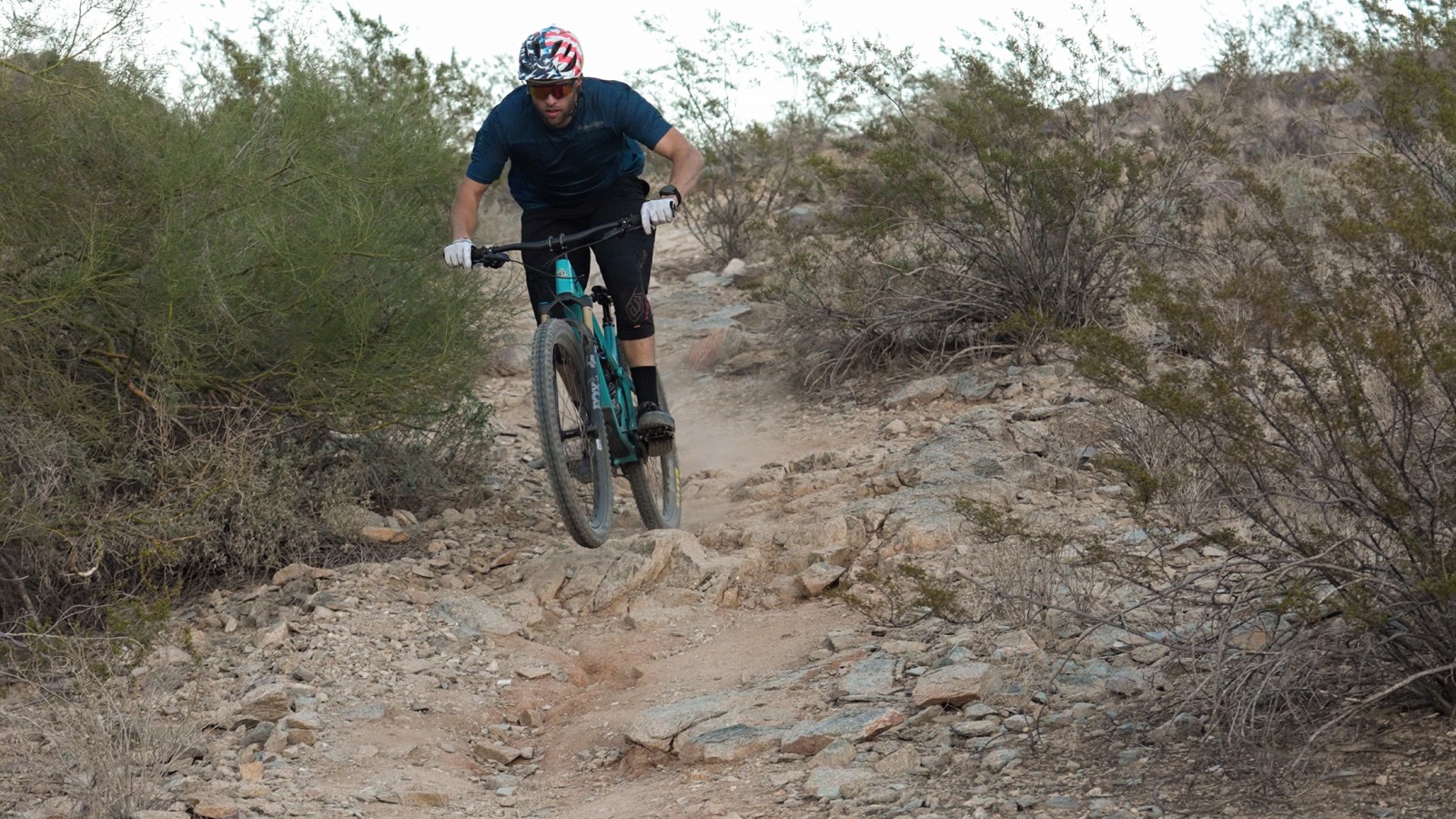
Rear Suspension Performance
The rear suspension provides a ton of support with just enough breakaway at the top to feel planted and take the edge off of most trail chatter. The mid-stroke support makes for a lively ride that is receptive to body movement on the bike allowing for popping out of turns or over any obstacles that would exceed the available wheel travel, even when we felt we didn't have enough speed to do so. While the initial breakaway is relatively light, providing great high-speed compliance with plenty of low-speed support for rider input, it is no surprise that blasting through larger chatter and square edge hits is where the bike isn't as sure footed. We rode the SB120 on a few of the same trails we test most enduro bikes on for good measure, and we were not surprised that it accelerated much faster but was also much harder to hold onto; not exactly a negative given the category of bike. There was no noticeable affect on the suspension from braking. Mashing on the brakes into turns was something we avoided, but we did not get a sense that there would be any form of brake jack or rise out of the rear from extreme braking.
Unique Features
The most unique feature of the SB120, like every SB model, is the Switch Infinity system and its Kashima coated sliders. But the difference between the 120 and other models is the 1 piece “Ultra Compact” link found only on this model. It helps push the shock forward in the frame and allow for a steeper seat tube angle.
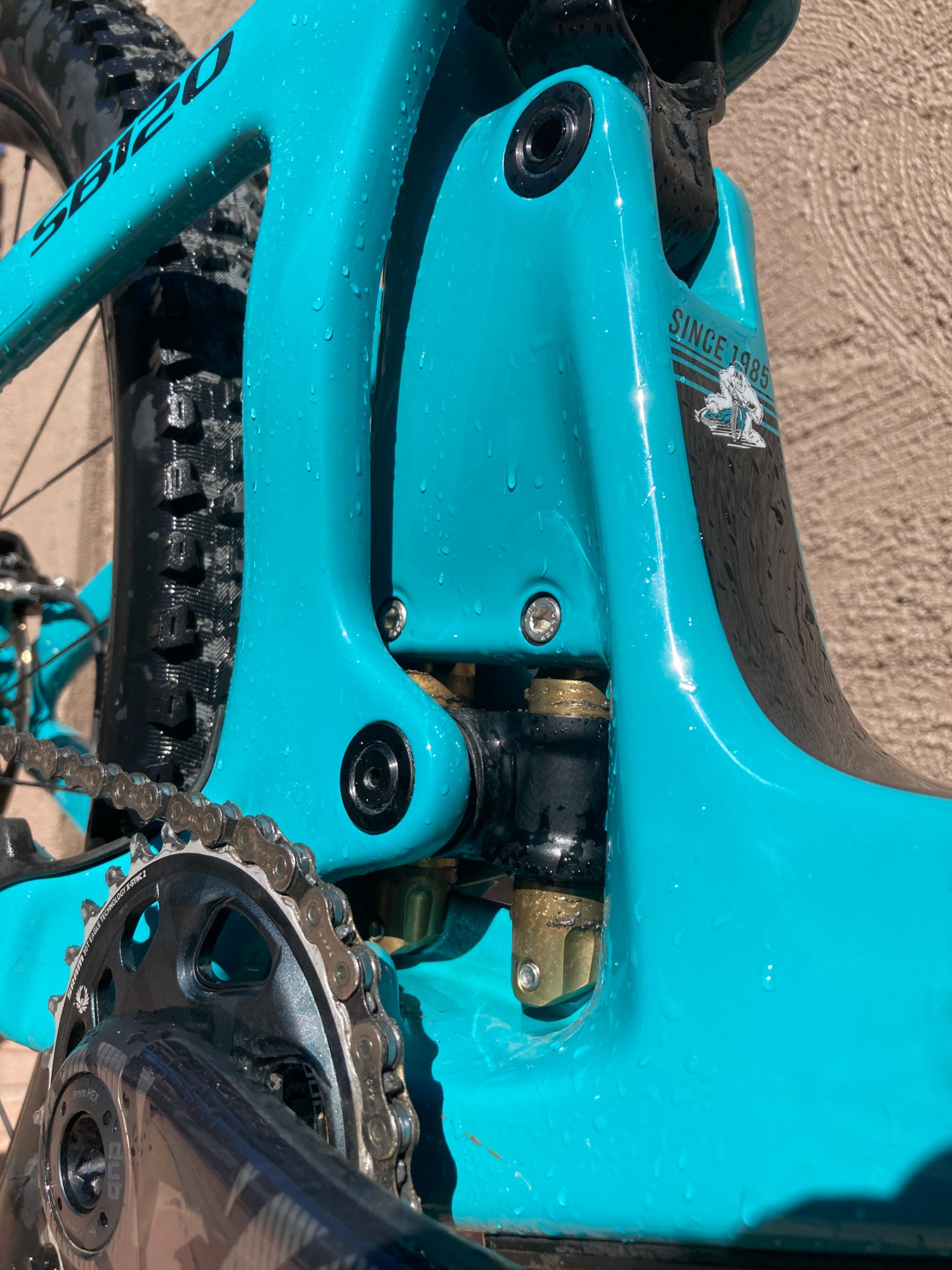
Geometry
Given the bike’s geo, we felt the SB120 performed best for less aggressive trails with higher speeds. The riding position on the bike feels comfortable for cornering, pumping, and jumping. We felt the pedaling position would be beneficial for long rides and tackling steep sustained climbs without requiring any additional effort than what is necessary. Its capability in terms of trail speed and terrain are outstanding for a 120mm-travel bike without taking away from the efficiency while pedaling. It is equally capable racing cross country as it is ripping through the backcountry. There are no geometry adjustments on the bike and we generally did not feel the need for any.
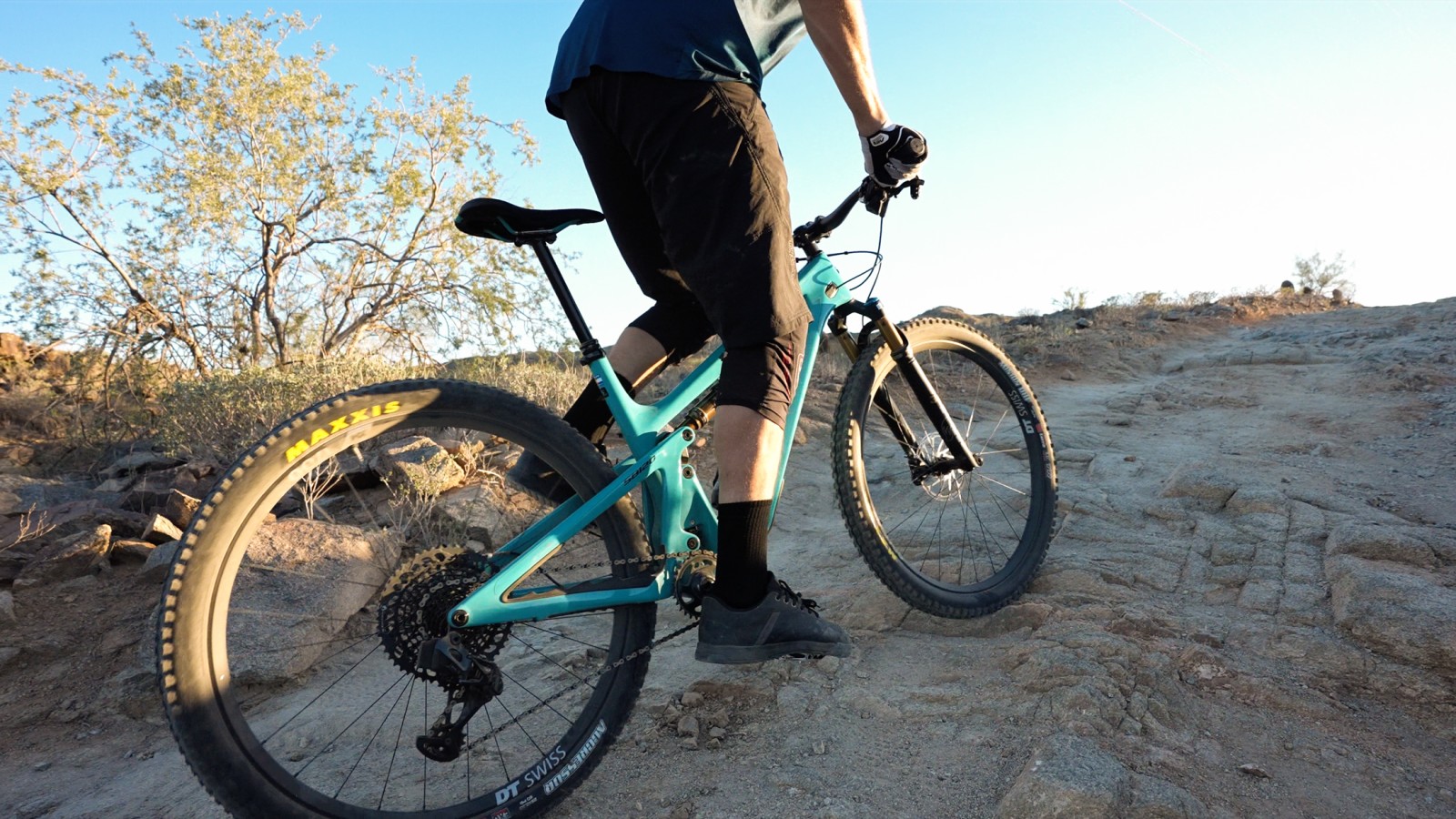
Climbing Performance
Response is immediate when putting down the power and the bike accelerates with ease. We felt inclined to sprint more often because of this and our overall lap speed felt much higher than on longer-travel bikes. We did not feel the need to touch the climb switch on the Fox DPS shock nor change the compression setting to anything firmer than level 1. The nimble geometry of the bike made tech climbs easy to navigate when moving at a slightly higher speed. While seated, pedaling at a lower speed required slightly more effort as we would hang up more often and get caught up from the slightly twitchy steering compared to longer-travel options. The SB120 did best when climbing out of the saddle or seated while spinning a higher cadence, which felt relatively easy thanks to the light weight of the bike.
Build Kit
The T3 level build kit ($9,600) of our SB120 came spec’d with FOX Factory suspension front and rear, SRAM AXS shifting, SRAM G2 brakes, DT Swiss XM1700 wheels, and Maxxis 2.5- and 2.3-inch tires front and rear. While still maintaining a relatively lightweight bike, the build kit hints at the broad level of capability the bike is targeted towards and suits those capabilities very well with a trail-oriented component spec rather than cross country.
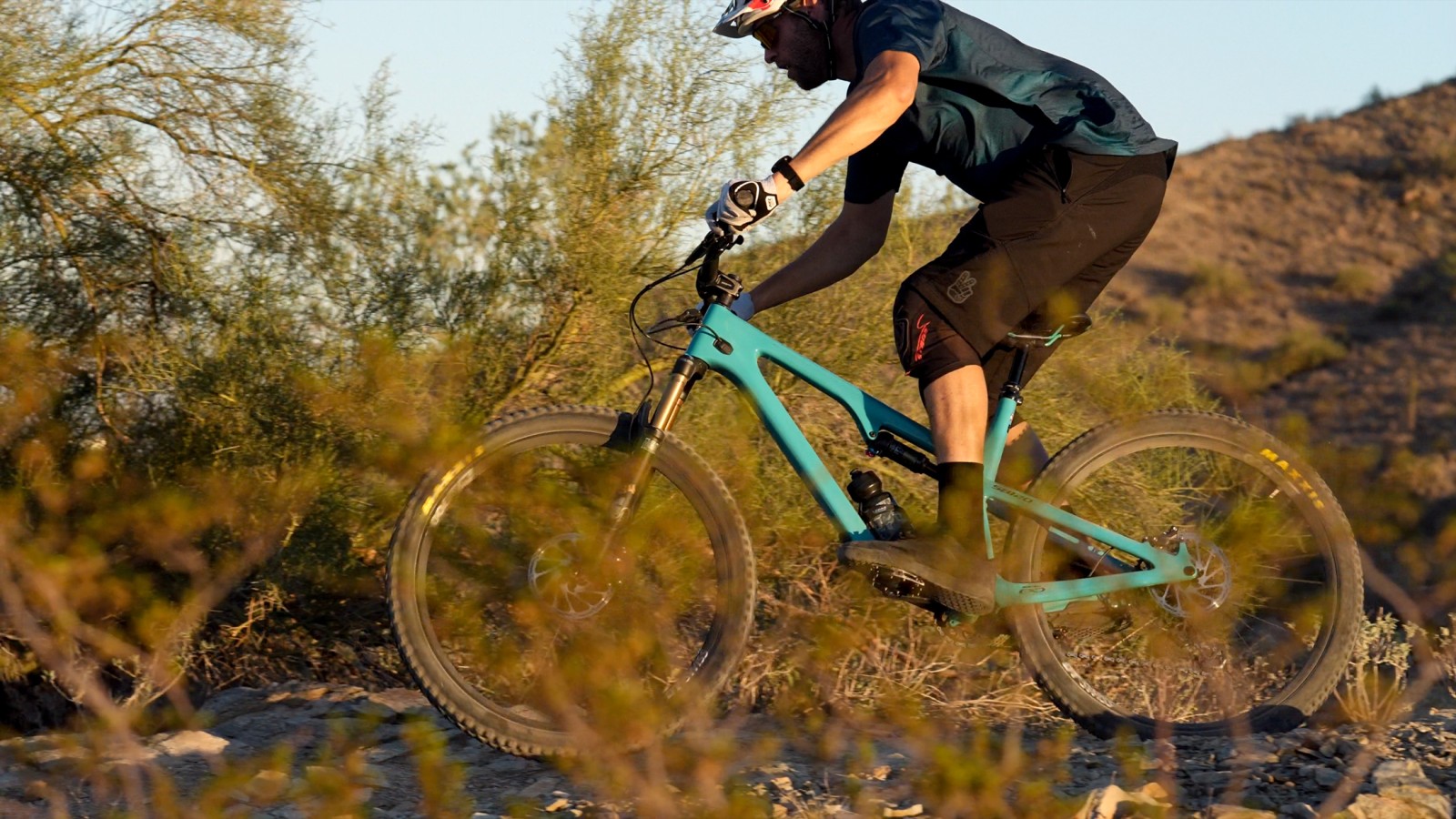
Fork / Shock Performance
The FOX Factory 34 fork with the Grip 2 damper performed flawlessly and impressed us with its performance even under a 225 lb rider. The FOX Factory DPS shock performed flawlessly as well and had plenty of rebound tuning for a heavier rider on the higher end of pressure.
Tire Performance
The stock tire combo of a 2.5 Maxxis Minion DHF up front and 2.3 Aggressor out back is one of the best options for the southwest trails we spent most of the test period on and proved to offer plenty of traction on the trails ridden in Colorado as well. Even with the standard EXO casing, we felt fully confident riding the SB120 at a high level straight away. The tires offered very little rolling resistance and a ton of traction on rocks as well as hardpack terrain with the ability to still break loose and slide when desired.
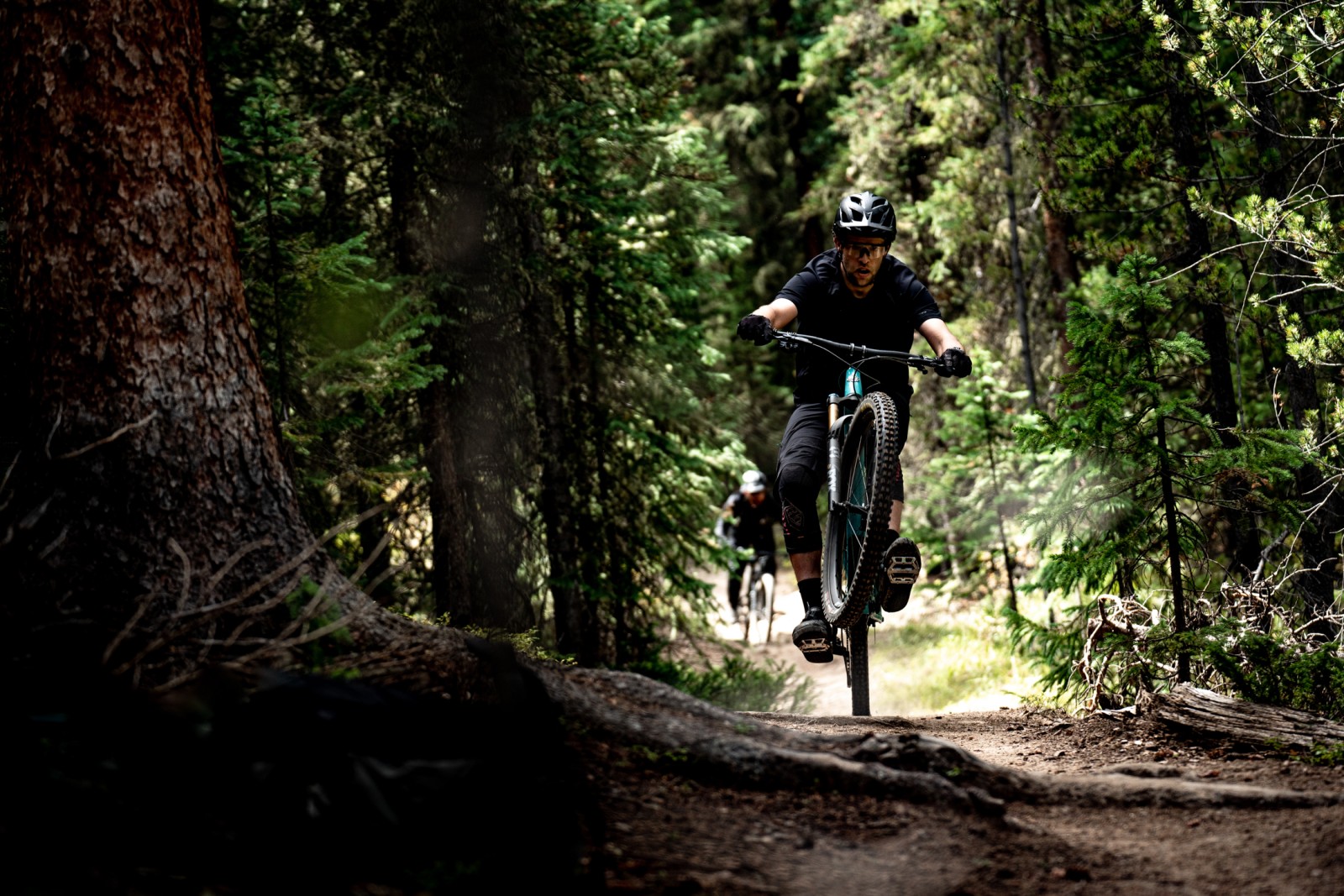
Wheel Performance
The XM1700 wheels held up great during our test and had zero issues. The 30mm inner width paired with 2.5 and 2.3 tire created a nice amount of air volume to absorb most of the chatter on trail while still providing a solid foundation for square edge impacts and cornering forces.
Brake Performance
The SRAM G2 brakes provided a firm lever feel and a decent level of modulation. While we didn’t experience any form of fade during the test period, the overall power of the brake was less than what we are used to and required a little extra time to slow down when pushing the bike and needing to slow down in a hurry.
Drivetrain Performance
The SRAM AXS drivetrain on our test bike shifted well like we’ve come to expect and had no hiccups during the duration of our test period. The drivetrain was free of resistance and had very little chain slap that we noticed with zero dropped chains during testing.
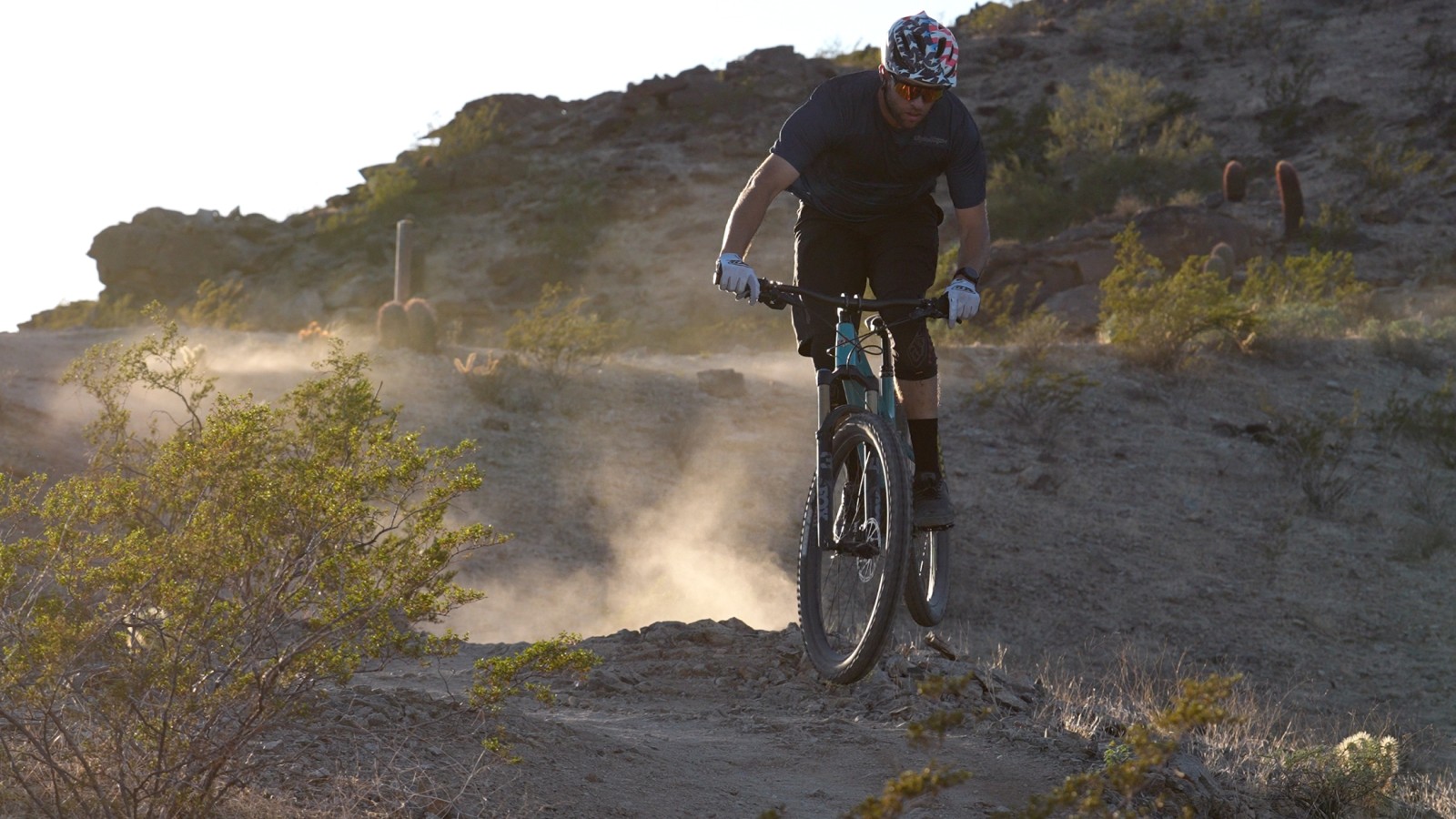
Long-Term Durability
We don’t foresee any long-term durability concerns with the frame of the SB120, nor any of the build kit components. The Switch Infinity links, however, we are curious about. The ring of grease on the stanchions had fine sand stuck to it regularly, although it did not malfunction in any way. Being more similar to a suspension component than a pivot bearing, we are curious to see how long-term use affects the system. We had zero issue with paint chipping because our test bike came fitted with a clear frame protection kit that is available to Yeti dealers when purchasing a bike. Should customers have an issue, Yeti backs up the frame with a 1-year warranty on paint and finish. Frame defects are covered under a lifetime warranty and crash replacement options are available.
What's The Bottom Line?
The SB120 is fun to point at any size root, rock, or lip knowing you'll land exactly where you want it to. It tracks the trail and holds a line well. It will burn a hole in your wallet, but that's not a surprise with the Yeti brand. This bike is targeted at those who want the most reward for their effort and the least amount of resistance when pointed either up or down the trail. Riders who enjoy longer outings will appreciate the light weight of the bike, the comfort of the chassis and the efficiency of the bike over a long day. Those with mellower trails who want to add a bit more excitement to their rides and don’t mind being more precise on gnarlier trails will also enjoy the handling characteristics of the SB120. The kind of trails with plenty of undulations to pump and jump paired with turns that allow speed to generate are what we had the most fun on. We felt the bike enhanced the experience by requiring less effort to go faster and rewarded the effort we put into the bike. While the build kit tested may not exactly be the best bang for your buck, we do think it is the best component spec for the bike and likely the one we would stick with if purchasing one. For the trails in Phoenix, we'd probably with a longer-travel bike, but we still had an absolute blast seeing what Yeti’s newest short travel trail machine is capable of.
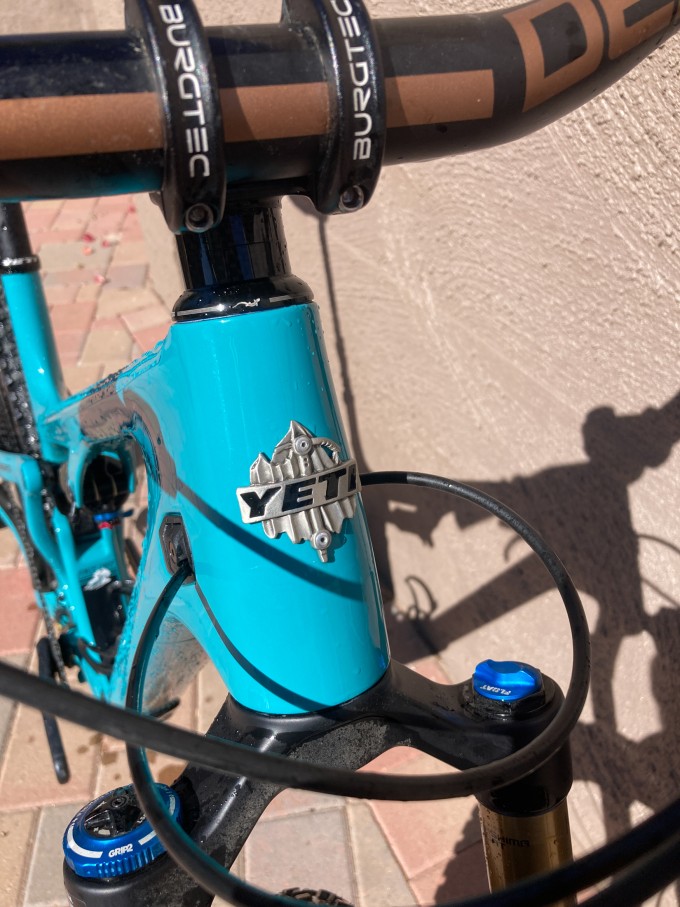
For more information, visit yeticycles.com.
Vital MTB Rating
- Climbing: 5 stars
- Descending: 4 stars
- Fun Factor: 5 stars
- Value: 3.5 stars
- Overall Impression: 4.5 stars
View key specs, compare bikes, and rate the new Yeti SB120 in the Vital MTB Product Guide.
__________________________________________________________________________
About The Reviewer
Jonny started mountain biking in 2003 after taking a trip to Northstar and discovering how much more could be ridden than on a BMX bike. He began racing at age 12 and raced for 12 years until ultimately deciding having fun on a bike was more important. After working in the industry for a few years and developing a deeper understanding of bikes inside and out, he has an aptitude for pairing his riding ability with the analysis of bikes and breaking down what makes them work well. He rides for fun and finds the most enjoyment out of going fast with friends.







View replies to: 2023 Yeti SB120 Review
Comments